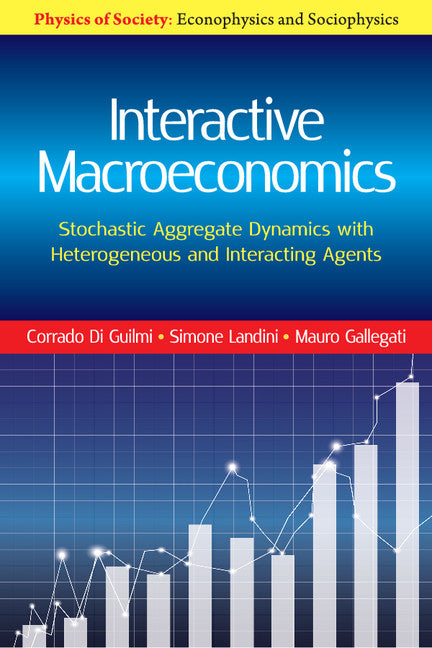Freshly Printed - allow 4 days lead
Couldn't load pickup availability
Interactive Macroeconomics
Stochastic Aggregate Dynamics with Heterogeneous and Interacting Agents
This book describes the analysis of macroeconomic agent based models using the tools of statistical mechanics.
Corrado Di Guilmi (Author), Mauro Gallegati (Author), Simone Landini (Author)
9781107198944, Cambridge University Press
Hardback, published 4 April 2017
302 pages
23.7 x 16 x 2 cm, 0.52 kg
One of the major problems of macroeconomic theory is the way in which the people exchange goods in decentralized market economies. There are major disagreements among macroeconomists regarding tools to influence required outcomes. Since the mainstream efficient market theory fails to provide an internal coherent framework, there is a need for an alternative theory. The book provides an innovative approach for the analysis of agent based models, populated by the heterogeneous and interacting agents in the field of financial fragility. The text is divided in two parts; the first presents analytical developments of stochastic aggregation and macro-dynamics inference methods. The second part introduces macroeconomic models of financial fragility for complex systems populated by heterogeneous and interacting agents. The concepts of financial fragility and macroeconomic dynamics are explained in detail in separate chapters. The statistical physics approach is applied to explain theories of macroeconomic modelling and inference.
Preface
List of tables
List of figures, 1. Introduction
Part I. Methodological Notes and Tools: 2. The state space notion
3. The master equation
Part II. Applications to HIA Based Models: 4. Financial fragility and macroeconomic dynamics I: heterogeneity and interaction
5. Financial fragility and macroeconomic Dynamics II: learning
Part III. Conclusions: 6. Conclusive remarks
Part IV. Appendices and Complements: Appendix A: Complements to Chapter 3
Appendix B: Solving the ME to solve the ABM
Appendix C: Specifying transition rates
Index.
Subject Areas: Data mining [UNF], Probability & statistics [PBT], Economic forecasting [KCJ], Econometrics [KCH], Macroeconomics [KCB]


